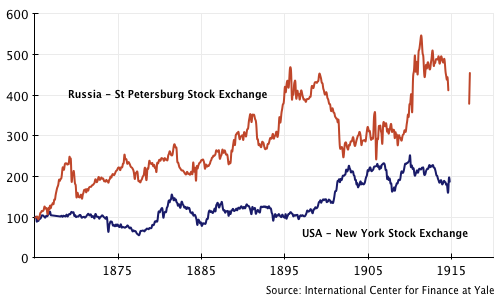The graphic below comes from a recent note by Barclays on global trade and requires little explanation. It shows total merchandise trade flows between the world’s main regions in 2012 (above) and 2002 (below).
Tag: emerging markets
New EM Exposed index from Stoxx
Index provider Stoxx announced an interesting new benchmark – the Stoxx Global 1800 EM Exposed Index. In brief, this is a sub-index of its Stoxx 1800 Global Index (which holds 1,800 developed world stocks) focusing on companies that get a substantial portion (at least 33%) of their revenues from emerging markets.
The press release [PDF] has a bit more detail, as does the index data page on the Stoxx site (although there isn’t much data up yet). Conceptually, this is pretty similar to the Russell Geographic Exposure Index series launched in September.
In both cases, the idea is that you can get exposure to EM growth through developed world stocks that offer better liquidity, corporate governance and other desirable factors. It’s a fairly popular theme and with two related indices launched in the last few months there’s a good chance that we will see an exchange-traded fund based on it sooner or later.
Vietnam has proved to be a terrible investment over the last four years. Widely seen as the “next Asian tiger” in the middle of the decade, an article in the FT today shows how attitudes have changed. Here’s a sample:
The government’s focus on breakneck growth at the expense of economic stability has led to growing inequality, soaring inflation, a lack of confidence in the currency and fears of a banking crisis.
Domestic overheating, coupled with the deterioration of the global economy, has forced many investors, foreign and Vietnamese, to revise their view of the country’s prospects. Deep-seated problems, such as corruption, poor education and infrastructure bottlenecks – all often overlooked by investors in the boom years – have moved into sharp focus.
And with inflation driving wages higher but labour skills not advancing as quickly, fresh questions are arising. Among them is whether Vietnam’s Communist party can force through painful reforms needed to ensure they avoid the “middle-income trap” ensnaring the likes of Malaysia and Thailand, whose economies are a source of cheap labour but not yet makers of higher-value products.
Reuters is reporting that the Indian government is considering relaxing restrictions on foreign individuals investing in Indian shares, in an attempt to attract more foreign capital. If this goes ahead – and that’s a big ‘if’ – it could be a very exciting development.
Very few countries actively bar foreign individuals from investing in their stock markets, although some make it difficult. Oddly enough, it’s the BRICs – the four emerging markets that foreign investors talk about the most – that are the hardest. And India is arguably the most frustrating of all.
This is the second part of a review of Asian income funds and emerging market income funds for UK investors, focusing on investment trusts. Click here for Asian income funds – unit trust and oeics.
Asian income funds – investment trusts
There are three Asian income investment trusts in the UK market. And it shows how keen investors now are on the income theme that none trade at a significant discount to net asset value (NAV) – for most ITs, a small discount to NAV is normal.
The Aberdeen Asian Income Fund (LN:AAIF) has a rather different geographic focus to the funds we’ve already looked at in part one – it’s much more geared to Southeast Asia. Singapore is the single biggest holding at 20%, followed by Australia and then Malaysia and Thailand. It doesn’t include a sector breakdown in its factsheet, but I estimate that the biggest holdings are the familiar duo of financials and telecoms at 25% and 20% respectively
Asian income funds and emerging market income funds may sound like a contradiction. After all, Asia and emerging markets are supposed to be growth investments. So why turn to a growth market for income?
In fact, Asian income and emerging market income are themes that make a lot of sense when choosing funds, for several reasons.
First, emerging market dividends are no myth. Many emerging markets stocks now have a culture of paying high dividends, so they make up a major part of investment returns in several countries. Dividends accounted for 30% of Asia ex Japan returns over the past decade – about the same as in developed markets.
